When the proper geomembrane installation is used and operated correctly on an engineered project, it can be a cost-effective way to create a sound fluid barrier. While any construction project will have variables that make it unique and each site/application will have its own set of complexities, geomembrane solutions can be readily optimized for the need.
Here, we will look at the top five site issues that demand certain performance properties from a geomembrane and see which specific XR-5 geomembrane tackles those issues.
1. Tight site, steep slopes. This situation is quite common for impoundments and for perimeter berms of secondary containment systems. Being a steep slope is a desirable and intentional feature because it makes land and geomembrane use more efficient. For this situation, use a geomembrane with these features:
-
- High yield tensile strength
- Seams that are greater than or equal to sheet material shear strength
- Negligible thermal expansion-contraction
- Long-term UV resistance
- Demonstrated strength uncompromised by contained liquid
The XR-5 product solution: 8130/8138 XR-5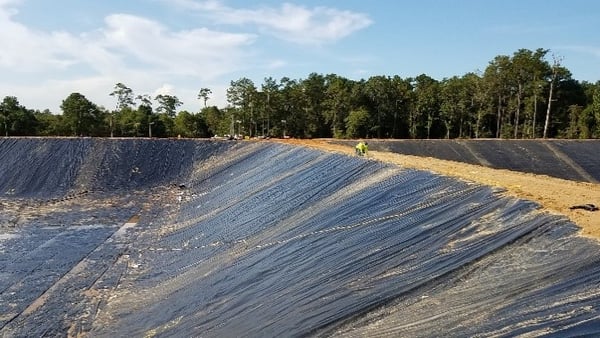
Sanitary sewer overflow impoundment
8138 XR-5
Alabama, USA
2. Protection of Expanded Polystyrene (EPS) geofoam. EPS geofoam use is becoming more widespread as a lightweight alternative to earthen structural fill. It can, however, be damaged by hydrocarbons which are present in many areas adjacent to roads, bridges and railways. The standard practice in these cases is to encapsulate (wrap) the geofoam using a geomembrane with these characteristics:
-
- Chemical resistance to water and hydrocarbons
- Toughness to withstand the rigors of a construction site and installation
- High puncture resistance
- Seams greater than or equal to sheet material shear strength
The XR-5 product solution: 9832 XR-5G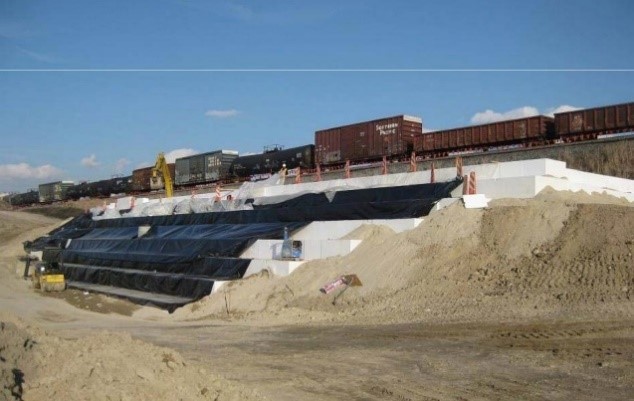
Light rail geofoam fill
9832 XR-5G
Utah, USA
3. Cold weather installation. Thanks to Mother Nature, plans and schedules don’t always go as anticipated. For our example here, a lining project is scheduled to be installed upon completion of earthwork, subgrade and some piping, but rain delays and cold weather push the timetable back. When temperatures are below recommended minimums for geomembrane installation, a cold weather geomembrane with these characteristics is needed:
-
- Low-temperature workability for folding, placement and welding
- Low-temperature resistance for flexing during maintenance activities
- Chemical resistance and low permeability to hydrocarbons in normal and artic environments
- Durability to withstand abrasion and puncture during and post-installation
The XR-5 product solution: 8130 XR-5 Ultra Low Temperature (ULT)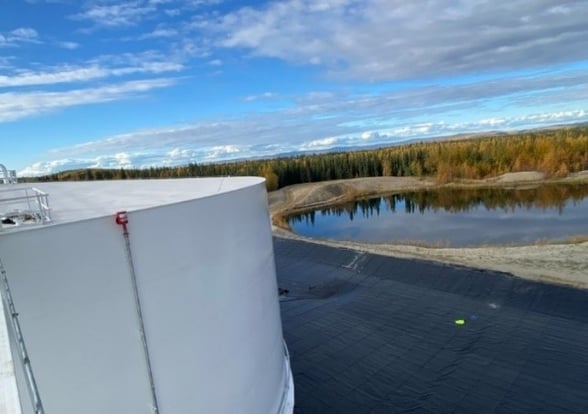
Secondary containment of jet fuel
8130 XR-5 ULT
Alaska, USA
4. Exposed Landfill Cover. It’s preferable in some circumstances to install a hydraulic barrier over a completed landfill for a lengthy amount of time, such as 10 years or more. This may occur in anticipation of further changes to the landfill, or the site itself may necessitate an exposed cover. A geomembrane used as an engineered exposed cover needs these properties:
-
- Negligible thermal expansion-contraction
- Exceptional UV resistance
- Low crystallinity, low susceptibility to environmental stress cracking
- High yield tensile strength and puncture resistance to withstand wind, subgrade, and maintenance
- Seams greater than or equal to sheet material shear strength
The XR-5 product solution: 8130/8138 XR-5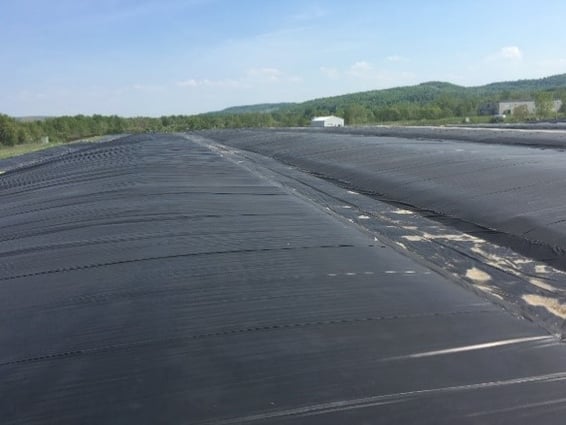
Exposed landfill cover
8138 XR-5
New York, USA
5. Diversion baffles for deep tanks. For our example here, an existing potable water storage or clearwell tank has short circuiting problems. This is causing the finished water quality to exceed allowable standards. The tank is large and 40 feet (12 m) deep and can only be taken offline for a matter of days, which makes installation of hard-shell baffle walls unfeasible. The answer is a geomembrane system with these characteristics:
-
- High yield tensile strength
- Low elongation
- Flexible, capable of large panel construction prior to placement in tank
- Able to carry its own weight in a high vertical hang
- Tested by and listed by NSF for potable water contact (NSF 61)
The XR-5 product solution: 8130/9046 XR-3 PW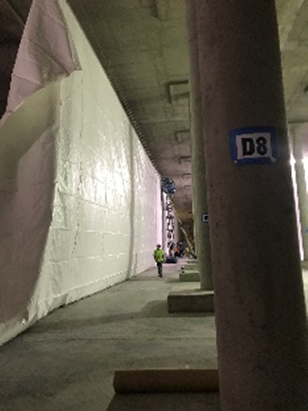
Potable water diversion curtains
9046 XR-3 PW
California USA
Situations, regions, weather and needs vary. While the five scenarios listed above are more common, they’re not a comprehensive list. For more, look to the XR series of geomembranes for additional solutions to site issues.



